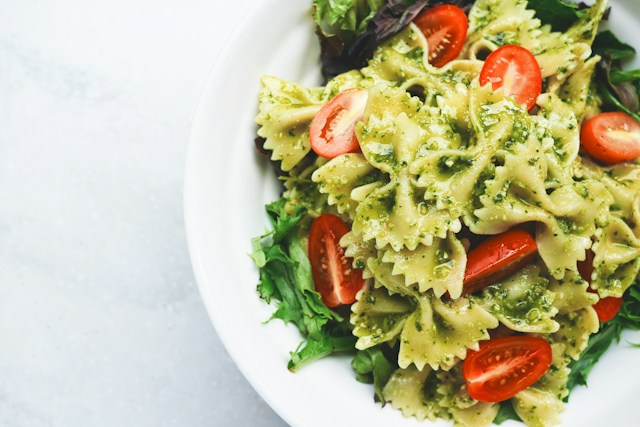What’s the Key to a Perfect Chinese Peking Duck with Crispy Skin and Hoisin Sauce?

In the wide world of gastronomy, certain dishes stand as iconic examples of a culinary tradition. When it comes to Chinese cuisine, the Peking duck, featuring crispy skin and served with Hoisin sauce, is the epitome of this tradition. This dish, beloved for its succulent meat and astonishingly crispy skin, is a staple in the Chinese culinary canon. But what’s the secret to achieving that perfect blend of textures and flavors? Today, we’re delving into the art of making the perfect Peking duck, providing you with the ins and outs of roasting the duck to perfection and preparing the accompanying Hoisin sauce.
1. The Importance of Choosing the Right Duck
The first step in crafting the perfect Peking duck is the selection of the duck itself. The duck serves as the centrepiece of the meal, so it’s critical to choose wisely. You want a duck that has a good layer of fat beneath the skin, as this will help to maintain the duck’s juiciness during the roasting process while also allowing for the skin to become beautifully crispy.
In parallel : Can You Bake an Authentic Italian Focaccia with Rosemary and Sea Salt?
When choosing a duck, opt for an organic, free-range bird if possible. These ducks tend to have a better fat-to-meat ratio and a more pronounced flavor compared to their conventional counterparts.
Remember, when it comes to Peking duck, the skin is as important as the meat, so a duck with a nice, healthy layer of fat beneath the skin is crucial.
In the same genre : How to Prepare a Gourmet Fig and Prosciutto Pizza with Blue Cheese and Arugula?
2. Preparing the Duck for Roasting
Once you’ve selected your duck, it’s time to prepare it for the oven. One key aspect of Peking duck that sets it apart is the glossy, crispy skin. Achieving this texture requires a few specific steps before the duck even hits the heat.
Begin by rinsing the duck inside and out with cold water, then pat it dry with paper towels. Next, a mixture of boiling water and honey is poured over the skin. This process helps to tighten the skin, resulting in a crispier finish.
Once this is done, the duck is left to dry for several hours, or even overnight if possible. The skin should be completely dry before it’s cooked to ensure it crisps up nicely.
3. The Art of Roasting the Duck
Now that your duck is prepared, it’s time to roast. Preheat your oven to a high temperature, around 425°F (220°C), as you want to start by cooking the duck at a high heat to render the fat and start the crisping process.
The duck should be roasted on a rack to allow the fat to drip off during cooking. After about 30 minutes on high heat, you’ll reduce the temperature and continue to roast until the duck is cooked through, usually an additional two hours or so.
The end result should be a duck with beautifully crispy, dark brown skin and juicy, succulent meat. Make sure to regularly baste the duck with its own fat, every 20 minutes, to keep it moist and flavorful.
4. Crafting the Perfect Hoisin Sauce
While the duck is the star of the show, the accompanying Hoisin sauce is a crucial side. This sweet and tangy sauce, made from fermented soybean paste, vinegar, sugar, garlic, and various spices, is a staple in Chinese cuisine and pairs perfectly with the rich, fatty duck meat.
Making your own Hoisin sauce at home is surprisingly simple and allows you to control the balance of flavors. Start by sautéing minced garlic in a little oil until fragrant, then add the remaining ingredients and simmer until the sauce thickens. Adjust the seasoning to taste, adding more sugar for sweetness or vinegar for acidity as needed.
The sauce should be served on the side, usually along with thin pancakes, for guests to spread on their slices of duck.
5. Serving the Duck Properly
Finally, when it comes to serving your Peking duck, tradition dictates a specific approach. Typically, the duck is carved in front of the guests, with the crispy skin being the first thing to be served.
The skin is usually served with thin pancakes, sliced spring onions, and cucumber sticks, accompanied by the Hoisin sauce. Guests can assemble their pancakes as they wish, adding a piece of crispy skin, some duck meat, a bit of sauce, and a few pieces of vegetable before rolling it up and enjoying.
As for the remaining duck meat, it can be served separately, often with a simple sauce or stir-fried with vegetables. The resulting meal is a true feast, with the crispy-skinned duck at its center.
6. The Significance of Condiments: Mandarin Pancakes and Vegetable Sides
In the universe of Chinese cuisine, Peking duck is traditionally paired with Mandarin pancakes, which are thin, soft, and slightly chewy, providing a delightful contrast to the crispy duck skin. It’s all about balance in texture and flavor when serving this iconic dish.
To make Mandarin pancakes, you need a simple dough made from flour and boiling water. Once the dough is rested, it is rolled out into thin circles and cooked on a hot griddle until lightly browned. The pancakes should be soft and pliable, perfect for wrapping around the succulent duck meat and crispy skin.
Furthermore, the Peking duck is also often served with sliced spring onions and cucumber sticks. These fresh vegetables provide a much-needed burst of freshness and crunch, balancing the richness of the duck and the sweetness of the Hoisin sauce.
In the grand scheme of things, every component of this dish complements each other, creating a symphony of flavors and textures in every bite. The combination of the juicy, crispy duck, the sweet and tangy Hoisin sauce, the soft Mandarin pancakes, and the fresh vegetables makes for an unforgettable dining experience.
7. Mastering the Leftovers: The Second and Third Courses
Traditionally, Peking duck is enjoyed in three courses. After the initial feast of crispy skin, succulent meat, and tasty condiments wrapped in pancakes, the remaining duck meat and bones are not to be wasted. It’s time to make the most of your leftover duck!
For the second course, the remaining duck meat can be chopped and stir-fried with a variety of vegetables. This dish is served as part of the main meal and provides a satisfying way to use up the leftover duck meat.
The third course, meanwhile, typically involves a rich and flavorful soup made from the duck bones. The bones are simmered with spices and vegetables for several hours, yielding a deeply flavorful broth that is the perfect ending to a Peking duck feast.
In essence, not a single part of the duck goes to waste. Each course allows the diner to appreciate the duck in a new way, from the initial presentation of the crispy skin and tender meat, to the rich and comforting soup made from the bones.
Conclusion
In conclusion, perfecting the art of Peking duck entails careful selection of the duck, meticulous preparation and roasting to achieve that prized crispy skin, crafting the perfectly balanced Hoisin sauce, and serving it traditionally with Mandarin pancakes and fresh vegetables. Moreover, it’s about making the most of the leftover duck meat and bones for the second and third courses, demonstrating a deep respect for the ingredient and reducing waste.
While this may seem like a daunting task, the end result is a meal that is a feast for the senses, providing a combination of textures and flavors that is deeply satisfying. It’s a celebration of Chinese culinary tradition, a dish that tells a delicious story in every bite, and a true testament to the intricate beauty of Chinese cuisine. So, go ahead, roll up your sleeves, and dive into the art of preparing and enjoying the perfect Peking duck.
